The Diamond Guide: Buying and Selling at Auction
Diamonds have captivated humanity for millennia, prized not just for their beauty but also for their extraordinary physical properties. These gems stand apart from all other minerals due to their unique chemical composition, crystal structure, and formation process. From the heart of the Earth to glittering displays in jewellery showcases, diamonds tell a story of time, pressure, resilience, and meticulous craftsmanship. Here, Head of Jewellery, Charlotte Peel tells us more about diamonds and what to look for when buying and selling at auction, explaining the 4Cs - Carat, Cut, Colour and Clarity - the global standard for examining gemstones.
Diamonds | The Ultimate Gemstone
Composition and Structure
The characteristic chemical composition and crystal structure of a diamond make it a unique member of the mineral kingdom. At its core, a diamond is remarkably simple, typically composed of approximately 99.95% carbon. The remaining 0.05% includes trace elements, which, while not essential to diamond’s chemical identity, some trace elements can influence colour or alter crystal shapes.
What sets diamond apart from other carbon-based minerals is its isometric crystal structure. This structure means that carbon atoms are bonded equally in all directions, forming a tightly-packed, symmetrical pattern. This is in stark contrast to graphite, which is also pure carbon but arranged in layers that slide easily over one another, making graphite soft enough to write with, while the strong covalent bonds in diamonds, make them the hardest naturally occurring material on Earth, meaning that you can only scratch it with another diamond!
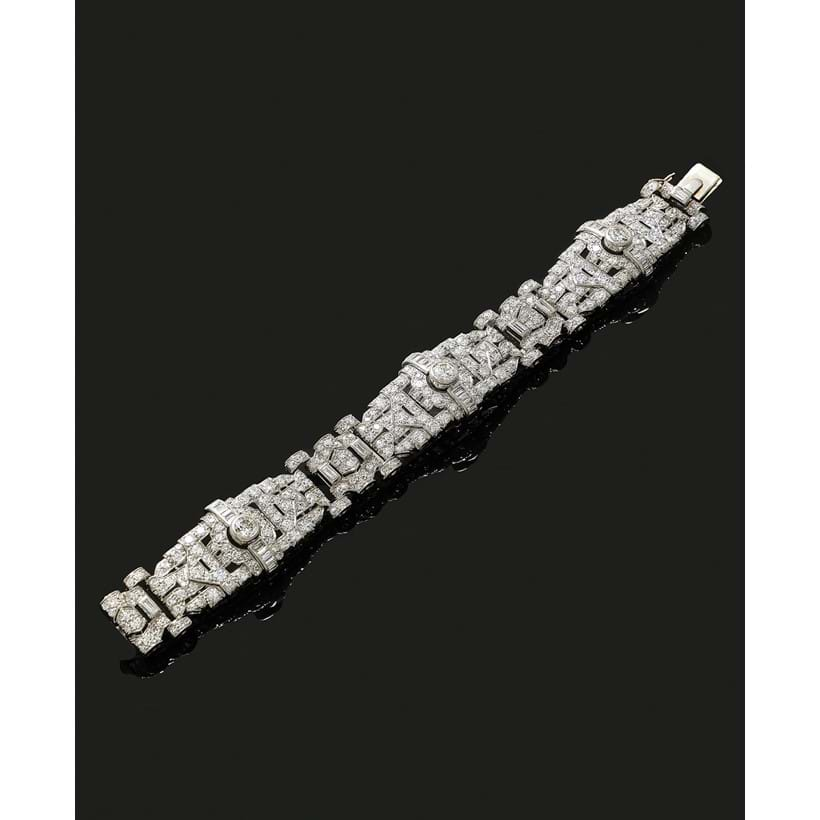
Formation: Born Under Pressure
Diamonds are formed 90 to 400 miles beneath the Earth’s surface, where temperatures exceed 2,100°F (1,150°C) and pressures are over 45,000 times greater than at sea level. Under these extreme conditions, carbon atoms bond in the unique isometric pattern that gives diamonds their renowned hardness.
Over millions - even billions - of years, some of these deep-formed diamonds were brought to the surface by violent volcanic eruptions. Since magma can dissolve diamonds, not every diamond survived this process. The diamonds that did survive were trapped in their host rock, called kimberlite. Over time, some diamonds were later released into streams and rivers through erosion, forming alluvial deposits. But many were damaged or destroyed along the way, making any diamond we find today a truly rare survivor.

Diamond Mining and Rarity
Today, diamonds are primarily recovered from kimberlite pipes. About 200-250 tons of ore must be removed and processed to uncover a single one-carat gem-quality diamond. Only 20-30% of mined diamonds are of sufficient quality to be used in jewellery.
Diamonds are more than just gemstones - they are time capsules from Earth’s ancient past. Their journey also makes them enduring symbols of strength and resilience. Without any one of these factors, diamond might be just another mineral. Fortunately, though, this special combination of chemical composition, crystal structure, and formation process gives diamonds the qualities that make them extraordinary.
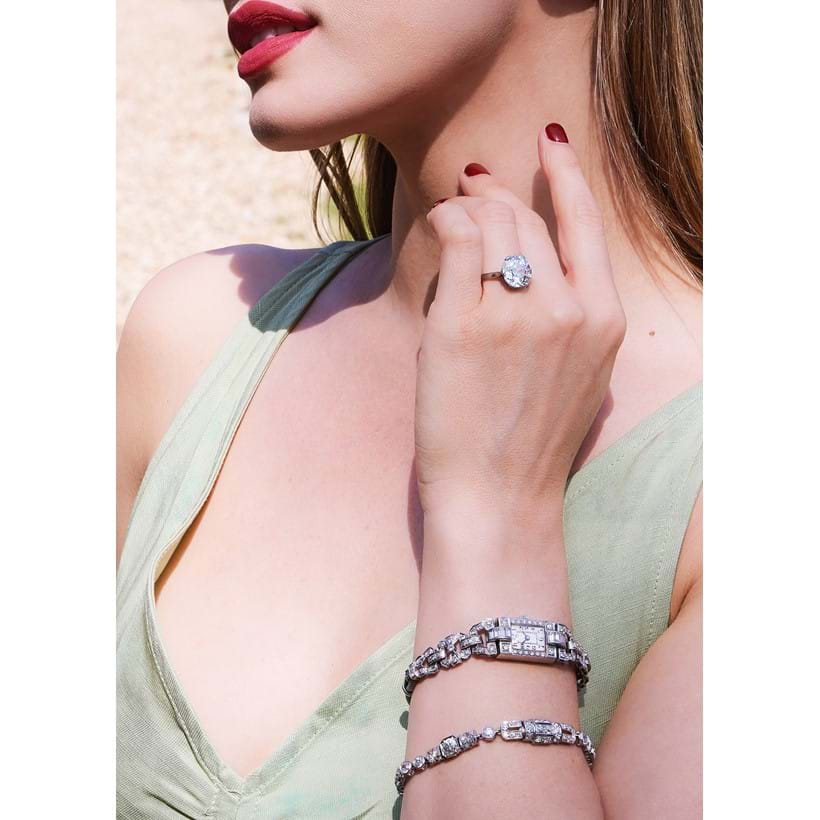
The Four C's
To evaluate and compare diamonds, professionals use a global standard known as the 4Cs: Carat, Cut, Colour, and Clarity. Developed and refined over thousands of years, these characteristics determine a diamond’s quality and value.
Carat: Measuring Weight
The carat (not carrots or karats) is the unit used to measure a diamond’s weight. The term is derived from keration, the Greek name for the carob tree, whose seed was once used as a natural counterbalance for weighing precious stones. One metric carat equals 0.2 grams or 0.007 ounces (1 ounce contains almost 142 carats, and a small paper clip weighs about a carat).

-
Diamonds are weighed to the thousandth of a carat and rounded to the nearest hundredth (point).
-
Over a carat, diamond weights are usually expressed in carats and decimals. For example 1.03ct.
-
Diamonds weighing under a carat are usually stated in points. For examples, a diamond weighing 0.83 carats is said to weigh "eighty-three points" or called an “eighty-three pointer.”
-
Some weights are considered “magic sizes”: half carat, three-quarter carat, one carat. While there is not much difference in these weights, it can cause significant price jumps.
However, weight alone doesn’t determine a diamond’s value - it must be evaluated in conjunction with the other Cs.
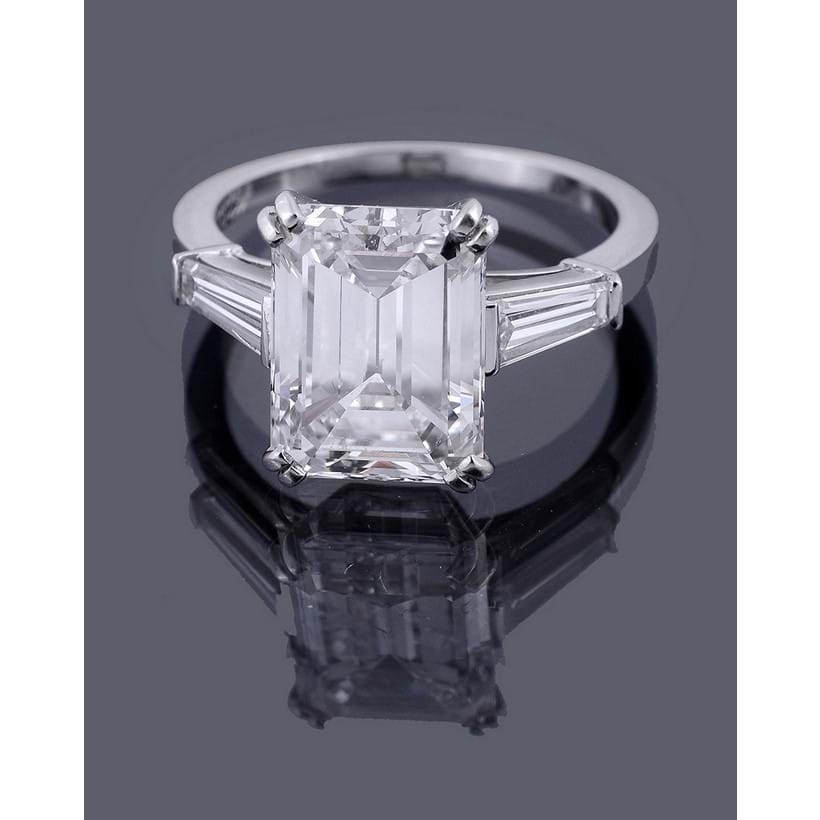
Clarity: Nature's Fingerprint
Few things in nature are truly perfect and diamonds are no exception. Most diamonds have natural internal and external features known as clarity characteristics. These are divided into two types:
-
Inclusions: Internal features - tiny crystals of diamond or other minerals trapped inside the stone during formation. Depending on their size and position, some remain visible even after the diamond is cut and polished, potentially affecting its appearance and value.
-
Blemishes: Surface irregularities - can include scratches, chips, or abrasions. While often less impactful than inclusions, they’re still considered in grading.
Clarity is the measure of how free a diamond is from these inclusions and blemishes, and measures the number, size, and position of these characteristics.
The GIA clarity scale includes:
-
Flawless (FL): No inclusions or blemishes under 10x magnification.
-
Internally Flawless (IF)
-
Very, Very Slightly Included (VVS1, VVS2)
-
Very Slightly Included (VS1, VS2)
-
Slightly Included (SI1, SI2)
-
Included (I1, I2, I3): Inclusions visible to the naked eye.
Inclusions affect both a diamond’s appearance and durability but can also help identify individual stones and provide clues about the diamond’s origin.

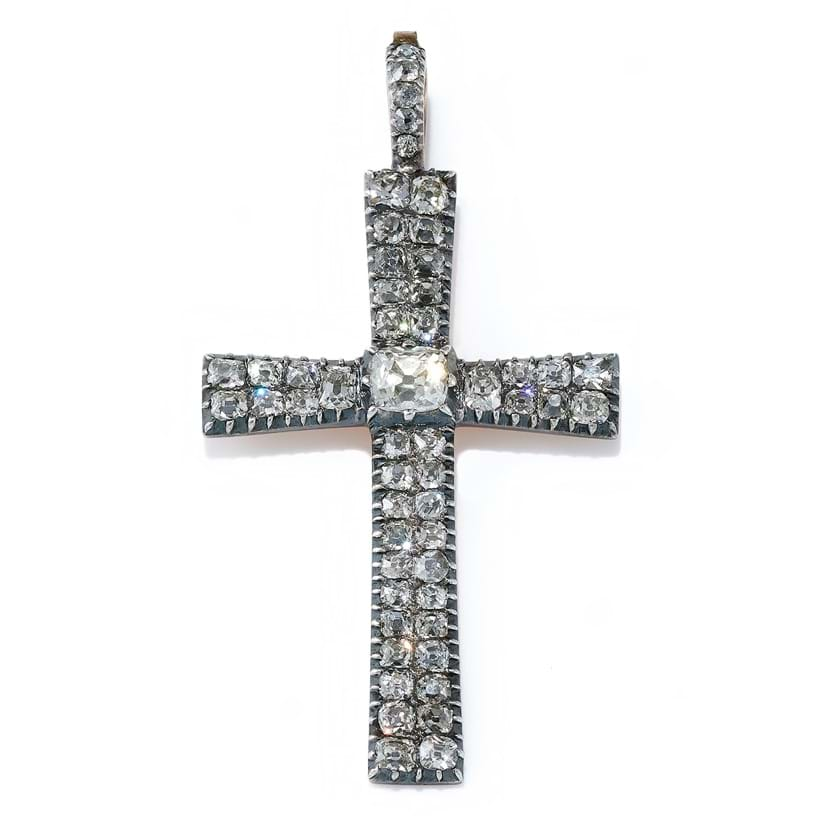
Colour: The Finer Shades
Subtle differences in colour can dramatically affect diamond value. Two diamonds with identical clarity, weight, and cut may vary greatly in price based on colour alone. A slight hint of colour can make a dramatic impact.
Diamonds occur in a range of colours. Those that fall within the normal colour range span from colourless to light yellow or brown. Within this spectrum, colourless diamonds are the rarest and most valuable, setting the benchmark for grading and pricing other diamonds in the same range.
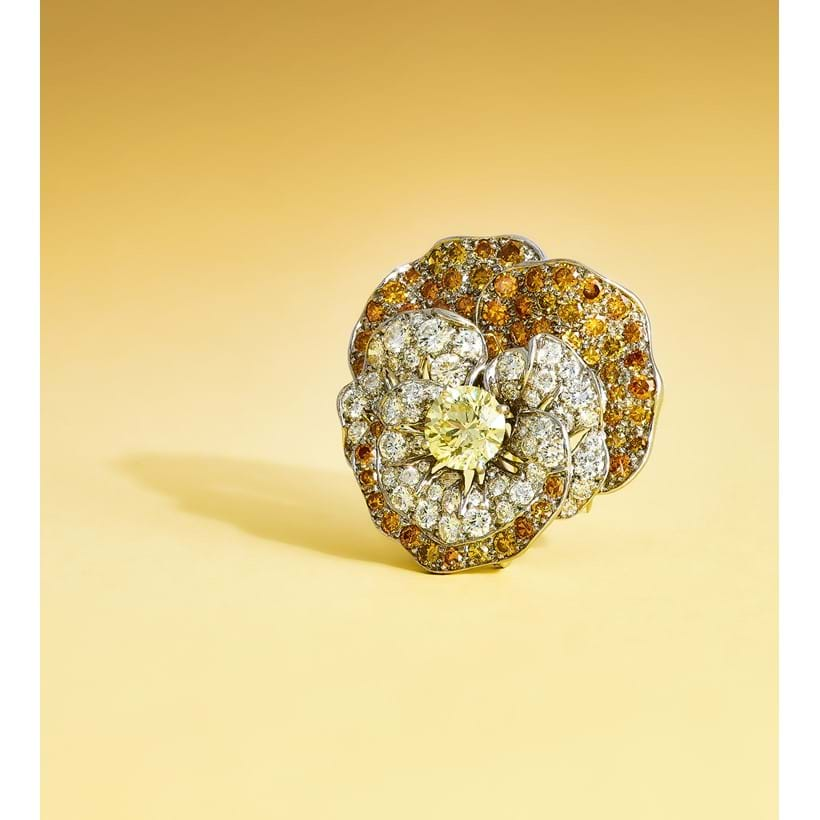
At the GIA Laboratory, diamond colour is assessed under controlled lighting conditions by comparing each stone to a set of masterstones - round brilliant diamonds with established colour grades.
The GIA D-to-Z scale is the industry standard for grading diamond colour. Each letter on the scale corresponds to a specific range of tone and saturation, measuring how much (or little) colour is present.
Diamonds in the D-to-Z range are graded based on the absence of colour. In contrast, fancy colour diamonds are yellow and brown diamonds that exhibit colour beyond the Z range, or diamonds that exhibit any other colour face-up. These rare specimens come in every colour of the spectrum, including, most importantly, blue, green, pink, and red. Their value generally increases with the strength and purity of the colour. Large, vivid fancy colour diamonds are extremely rare and very valuable.

Cut: Unlocking Brilliance
A diamond’s cut is crucial to its beauty, with every facet displaying the craftsman’s skill and care. A diamond’s proportions play a crucial role in how it interacts with light. When light enters through the crown and exits through the pavilion, the diamond can appear dark and dull. However, diamonds with well-balanced proportions and excellent polish reflect light more effectively, resulting in a bright, colourful and sparkling appearance.

The beauty of a diamond comes from three key optical effects:
-
Brightness: the reflection of white light from the surface and inside.
-
Fire: Flashes of colour as light disperses.
-
Scintillation: the sparkle caused by the contrast between light and dark areas as the diamond moves.
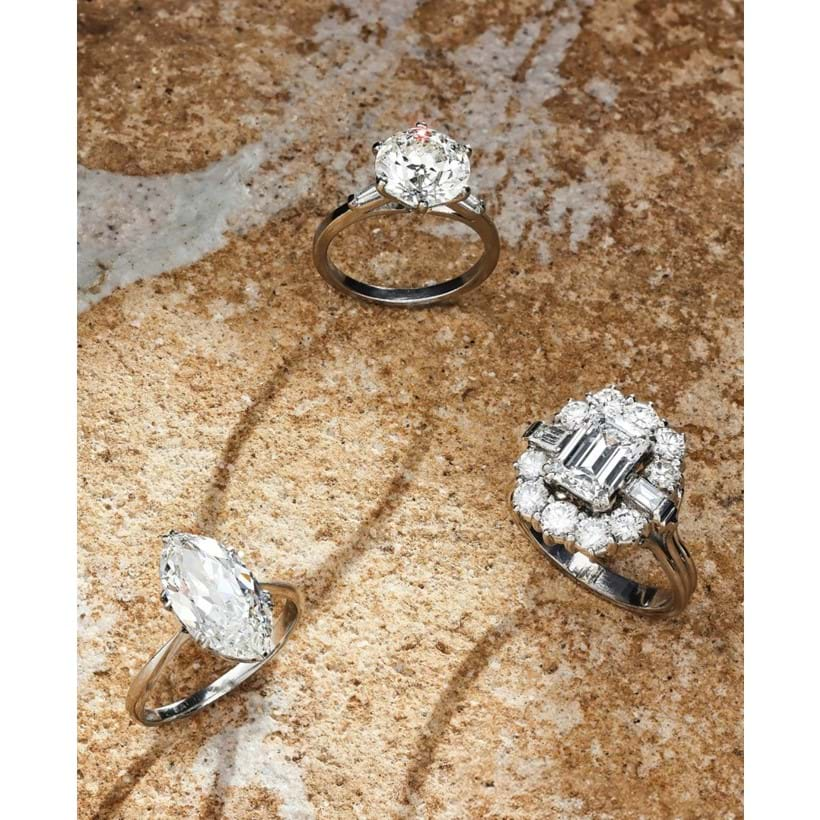
The term “cut” can also refer to the diamond’s shape. Each shape offers a unique look and character. Different cuts include:
Old Mine Cut
Developed in the 18th - mostly found in Georgian & early Victorian jewellery.

Rose Cut
A domed facetted diamond, first developed in the 1500s, mostly found in Georgian & Victorian jewellery.

Old European Cut
Evolved from the old mine cut, but rounder and more proportionate, mostly 1860s-1930s.

Round Brilliant Cut
The most common diamond cut, developed by Marcel Tolkowsky in 1919, it has become the defining cut for diamonds.

Fancy Cuts
Fancy cuts include all non-round shapes, from the more traditional pear, emerald, marquise, heart and Asscher cuts to the more inventive and unique, which can be flower shapes or horse heads, or wherever the cutters imagination takes them.

Fluorescence: A Hidden Glow
Around 35% of diamonds emit a visible light called fluorescence when exposed to ultraviolet light (UV). Blue is the most common fluorescent colour in gem-quality diamonds. In rare instances, fluorescence can be white, yellow, orange, or many other colours.
Strong blue fluorescence can make a light yellow diamond look closer to colourless in sunlight. Blue and yellow are colour opposites and tend to cancel each other out, so blue fluorescence masks the yellow colour. If the fluorescence is too strong it can make the stone look cloudy or “oily,” which can lower the value of the diamond.

A Diamond is Forever: The Enduring Appeal of Diamonds
Diamonds are more than just sparkling stones - they are remarkable natural materials formed under extreme pressure and heat deep within the Earth over billions of years. Their transformation from raw crystal to polished gemstone is the result of complex geological processes, skilled craftsmanship, and technological precision.
Whether admired for their rarity, valued for their strength, or cherished for their beauty, diamonds truly are extraordinary creations- born of carbon, shaped by nature, and polished to perfection.
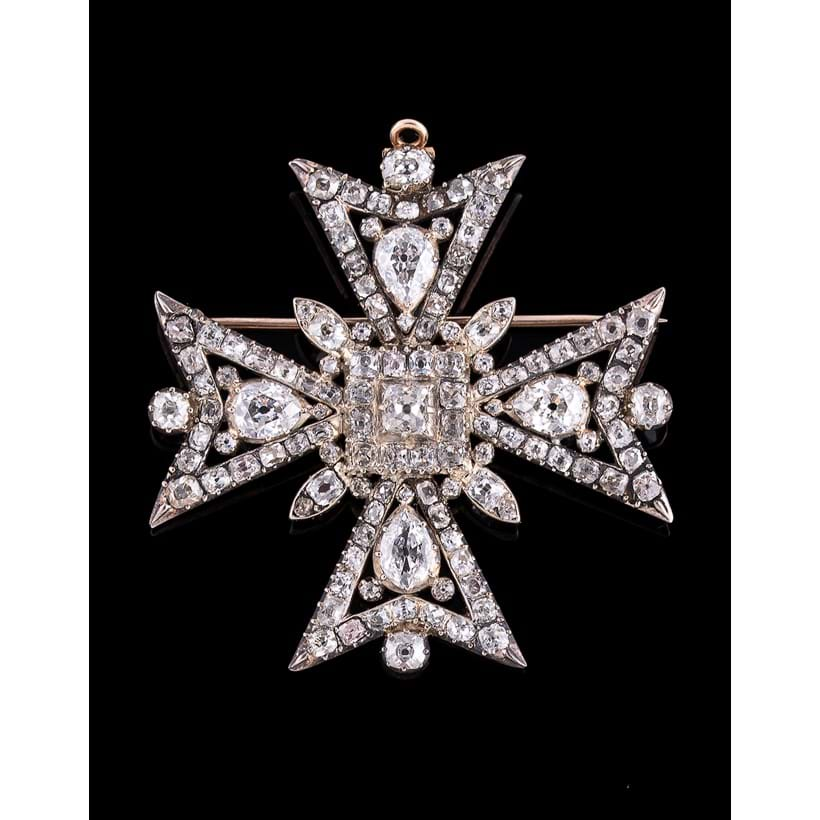
Dreweatts Auctions
With four Fine Jewellery auctions each year, Dreweatts offers the finest jewels from the world-famous ateliers of Cartier, Boucheron, Van Cleef & Arpels, among many others, antique and period pieces and jewels set with diamonds, important coloured stones, such as rubies, sapphires and emeralds, as well as natural pearls.
The market for diamonds is truly global and with auction previews at our gallery on Pall Mall, London and at our country-house salerooms in Newbury, Dreweatts operates at both a local and an international level, with buyers and consignors from all over the world.
Upcoming auctions
For more information about the upcoming auctions and to stay updated with the latest news, sign up for email alerts, here.
Request a valuation
For a free auction valuation, please contact the department on: +44 (0) 1635 553 553 jsw@dreweatts.com or complete our online valuation form here.


















